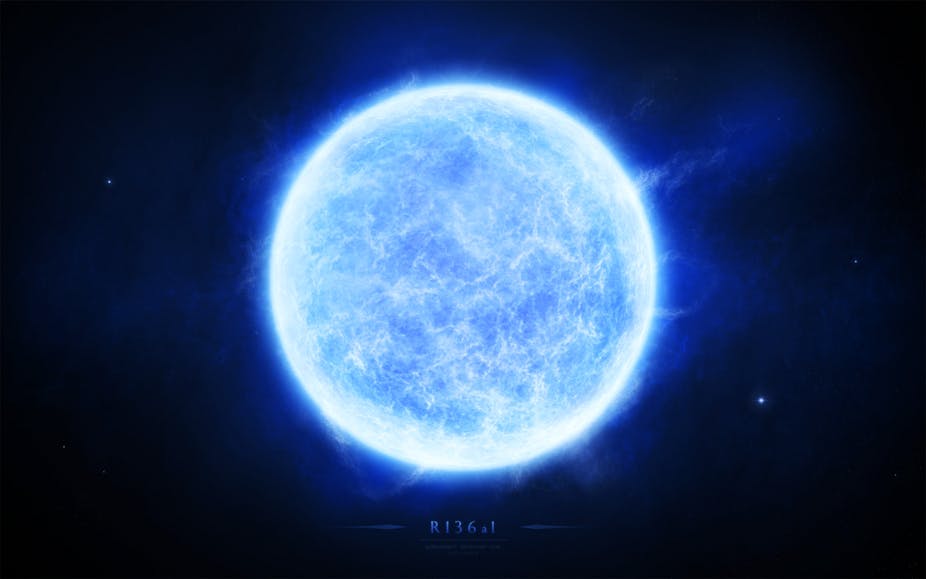Look up at the night sky and it is filled with stars. But only a microscopic fraction are visible to the naked eye. In fact, there are estimated to be 100 billion stars in 10,000 billion galaxies in the visible universe. This means that there are roughly 1024 stars out there.
These spectacular powerhouses come in an array of different colours and sizes – and many make our own Sun look like a mere pipsqueak. But which is the true giant of the heavens?
Well, we have to start by defining what we mean by giant? Is it the one with the largest radius, for example, or the greatest mass?

Galactic bohemoths
The star with possibly the largest radius is currently UY Scuti a variable bright red supergiant in the constellation of Scutum. Located around 9,500 light years from Earth, and composed of hydrogen, helium and other heavier elements similar to the chemical composition of our Sun, the star has a radius 1708 (±192) times larger than our Sun’s.
That is nearly 1.2 billion km, resulting in a circumference of 7.5 billion km. To put that in perspective, it would take you 950 years to fly around it in a commercial airliner – even light would take six hours and 55 minutes to circumnavigate it. If it were to replace our Sun, its surface would be located somewhere between the orbits of Jupiter and Saturn – needless to say, Earth would be swallowed up.

Given its vast size and a possible mass of 20 to 40 times that of our Sun (or 2-8×10³¹kg), UY Scuti has a probable density of 7×10⁻⁶ kg/m³. In other words, it is more than a billion times less dense than water.
In fact, if you could place this star in the biggest water bath in the Universe, it would theoretically float. Being more than a million times less dense than Earth’s average atmosphere at room temperature, it would also bob around in mid-air like a balloon – if only you could find a park big enough.
But if these insane facts blow your mind, we haven’t even started. UY Scuti may be vast but it’s not a heavyweight. The king of the heavyweights is the star R136a1, located in the Large Magellanic Cloud, about 165,000 light years away.

Massive attack
This star, a sphere of hydrogen, helium and heavier elements at roughly half the amount of the Sun , is only 35 times the radius of our Sun, but a colossal 265 times more massive – impressive, especially given that it has already lost 55 solar masses during its 1.5 million year life time.
This Wolf-Rayet type star is far from stable. It would appear as a fuzzy blue sphere with no clear surface as it pushes out enormously powerful stellar winds. These winds travel at a blistering 2,600 km/s – or 65 times faster than the Juno probe, the fastest man-made object.
As a result, it loses mass at the rate of 3.21×10¹⁸kg/s, the equivalent of an Earth every 22 days.
Such a stellar rock star shines bright and dies fast. R136a1 radiates away nine million times more energy than our Sun, and would appear 94,000 times brighter to our eyes if it replaced it. In fact, it is the most luminous star ever discovered.

It has a surface temperature of more than 53,000K and it will only live for two million years. Its death will be a spectacular kind of mega supernova leaving behind not even a black hole.
Of course, against these giants our own Sun seems a little insignificant, but it, too, will grow in size as it ages. In around seven-and-a-half billion years, it will reach its maximum size as a red giant, expanding so far that the Earth’s current orbit will just be inside it and spiral into the Sun even before that.
But all stars are only tiny parts of larger galaxies, themselves pin pricks in a truly vast Universe. And Earth? Well, best not dwell on that.


